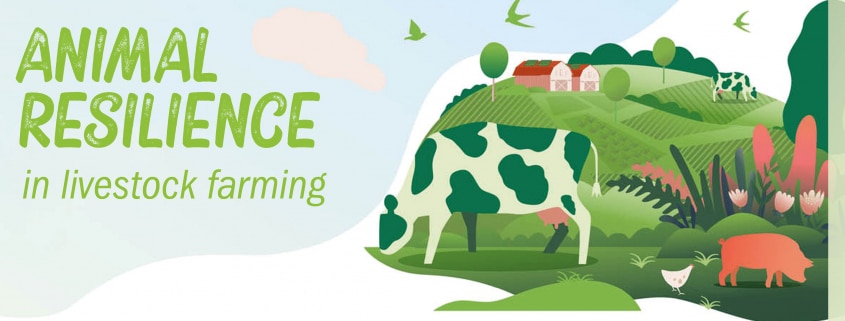Animal resilience – economic value in livestock
Scientists working in animal genetics are pointing out the economic value of animal resilience on farms, where labour time is restricted. Animal breeding companies are showing an increasing appetite for resilience to be included as a trait in breeding goals.
Author: Gwendolyn Jones, Product Manager Anco FIT
Can we breed for animal resilience?
Current developments and future trends in the livestock industry are giving way to a new research focus in genetics for livestock production. This research is looking to develop selection tools for farmers to improve the resilience of animals in their production system.
So far breeding goals have not included resilience. However, research groups from Australia and the Netherlands have recently demonstrated the potential for resilience in breeding goals and suggested ways of how we could genetically select for it in livestock animals.
Resilience definition in animal production
“The capacity of the animal to be minimally affected by disturbances/challenges or to rapidly return to the state pertained before exposure to a disturbance” (Berghof et al 2019).
Colditz and Hine (2016) describe resilience as a comparative measure of differences between animals in the impact of a challenge and the result of lower sensitivity or better adaptability to a challenge. The biological processes underlying resilience relate to adaptive responses that occur to minimize the impact of a stressor.
How to measure resilience in farm animals
From the definition of resilience as reduced sensitivity to potential disturbances, it follows that the desirable phenotype could be identified by measuring the rate of recovery to baseline and normality of behavioural, physiological, immune or production traits following the disturbance. Instead of measuring the magnitude of these variables while the animal attempts to cope with the stressor.
More recent scientific papers say resilience can be measured based on deviations of expected production and observed production over a period of time. One indicator for more resilient animals could be that they have a smaller variance in deviations of production traits over a period of time than the population average.
For example, there are favorable correlations between the residual variance of feed intake and feed duration with mortality and the number of health treatments in pigs in a challenge environment. This suggests that residual variance of feed intake and feed duration can be used to select for more resilient pigs.
Recent technological advances facilitate the increase in the number of observations that can be made on individual animals to more accurately estimate deviations and consequently genetic parameters. Routine data collection form automatic milking systems (AMS) and automatic feeding systems (AFS) for cattle and pigs are the most well-known and well-developed examples. Animal breeders expect more rapid progress with measurements from wearable sensors, which are already being used for monitoring animal behaviour, physiological changes and detecting health and disease status in animals.
Economic value of animal resilience
Researchers point out that when determining the economic value of traits, care needs to be taken to avoid double counting. They suggest that the economic value of resilience can be based on labour costs associated with observing animals that show signs of disease or other problems. These could be visual signs or alerts generated by sensors, automatic feeding systems or automatic milking systems.
Labour time is limited. Therefore, farmers have a requirement for healthy and easy-to-manage animals, especially when the number of animals per farm employee is increasing. A reduction in time spent on an animal with an alert will reduce costs associated with labour. Improved resilience results in easier to manage farm animals, which would reduce labour requirements and thus allow more animals per farm. Consequently, selecting for more resilient animals can increase farm profit.
Further reading:
Animal Science turns to advancing resilience for heat tolerance



